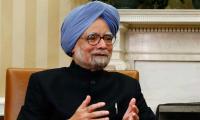The top Indian Army leadership, while it must have set goals for itself, seems bewildered and operating in a blind alley. It is stuck with unfriendly neighbours both in the north and the west, while the neighbouring island in the south is also not particularly happy with the Indian government policies. Another small neighbour in northeast has openly shown its displeasure at the course of action of its larger neighbour for the past several years. So how does the Indian Army is trying to tackle the myriad of challenges it faces?
First, the new Indian Army chief has adopted “the propaganda and threat” mode towards Pakistan. He once in a while talks about surgical strikes in Azad Kashmir or retaliation on the Line of Control. That is one way to keep the issue of held Kashmir away from the eyes of the world and satisfy the domestic audience.
Second, the face-off with the Chinese at Doklam has opened the possibility of a real bloody clash with the Chinese Army, something New Delhi was not prepared for and taking the Chinese threat lightly. The Indian Army chief must be deeply worried about the escalating threat from the north but perhaps there is little he can do about it.
Third, the Indian Army is short of proper arms and ammunition. India’s Comptroller and Auditor General (CAG), in a report on ammunition management, recently revealed that the army had some significantly disturbing shortcomings. He stated the Indian Army was suffering from a drastic shortfall of necessary ammunition, mostly because the ordnance factories had not improved their output or quality and the procurement process continued to run on the aged inefficient pattern. He said of the 170 kinds of ammunition in 2013, just 27pc was ready for 20 days of intense fighting, while in September 2016, 80pc ammunition was below the required levels.
Fourth, India comprises lots of various ethnic, religious and tribal groups, most of which are at odds with each other. As the BJP and Hindu nationalists mount pressure on minorities, possibility of violence on a large scale and India’s sliding into a civil war grows. So does the pressure on the Indian Army that silently watches India’s secular status drifting away.
The most interesting thing is that the Indian Army chief General Bipin Rawat said neither China nor Pakistan was an imminent threat to the country. This was a significant departure from his earlier statement wherein he had dubbed the two countries “India’s northern and western adversaries respectively and that the country needed to be prepared for a two-front war.” Just a week ago, Rawat declared on the sidelines of an event in Dehradun: “None of the country (China or Pakistan) is a threat.”
When he was reminded of his previous remarks following the worst India-China military face-off at Doklam at the India- Bhutan-China tri-junction, he tried to clarify: “What I had said... said.” Period.
China had reacted to Rawat’s earlier remark, saying ties between the two countries should not be derailed.
A write-up in an Indian think tank, talking about the moral values in the Indian Army, stated: “The erosion in moral values in the armed forces over the past few decades has left India’s political and military leadership bewildered and befuddled. No amount of preventive or curative measures appear to be succeeding in arresting this fall, as day after day dawns with news of fresh instances of impropriety and indecorum.” This was preceded by a comment by an Indian writer who admitted: “The Indian armed forces, which were well known for their ethics and code of conduct, need to review the situation and take radical steps to ensure a return to their ethics, values and traditions.”
It seems the top Indian Army leadership is operating in an environment of confusion, photo opportunities, wild accusations, limited operational and intellectual capability and problematic coherence.
Legendary poetess Parveen Shakir. — APP/FileIslamabad: The Parveen Shakir Trust will observe the 30th death...
Coordinator General of COMSTECH Prof Dr Muhammad Iqbal Choudhary seen in a meeting on the launch of the “COMSTECH...
Children seen at the 'Bookshaw' session for children and a health camp for mothers and babies organised by Association...
Fatima Jinnah Women’s University building can be seen. — ILM Website/FileRawalpindi: Fatima Jinnah Women...
A general view of the Margalla Hills Islamabad can be seen in this image. — Facebook/Islamabad Wildlife Management...
A picture from an exhibition based on rare pictures of Quaid-e-Azam inaugurated by Assistant Commissioner Murree on...







